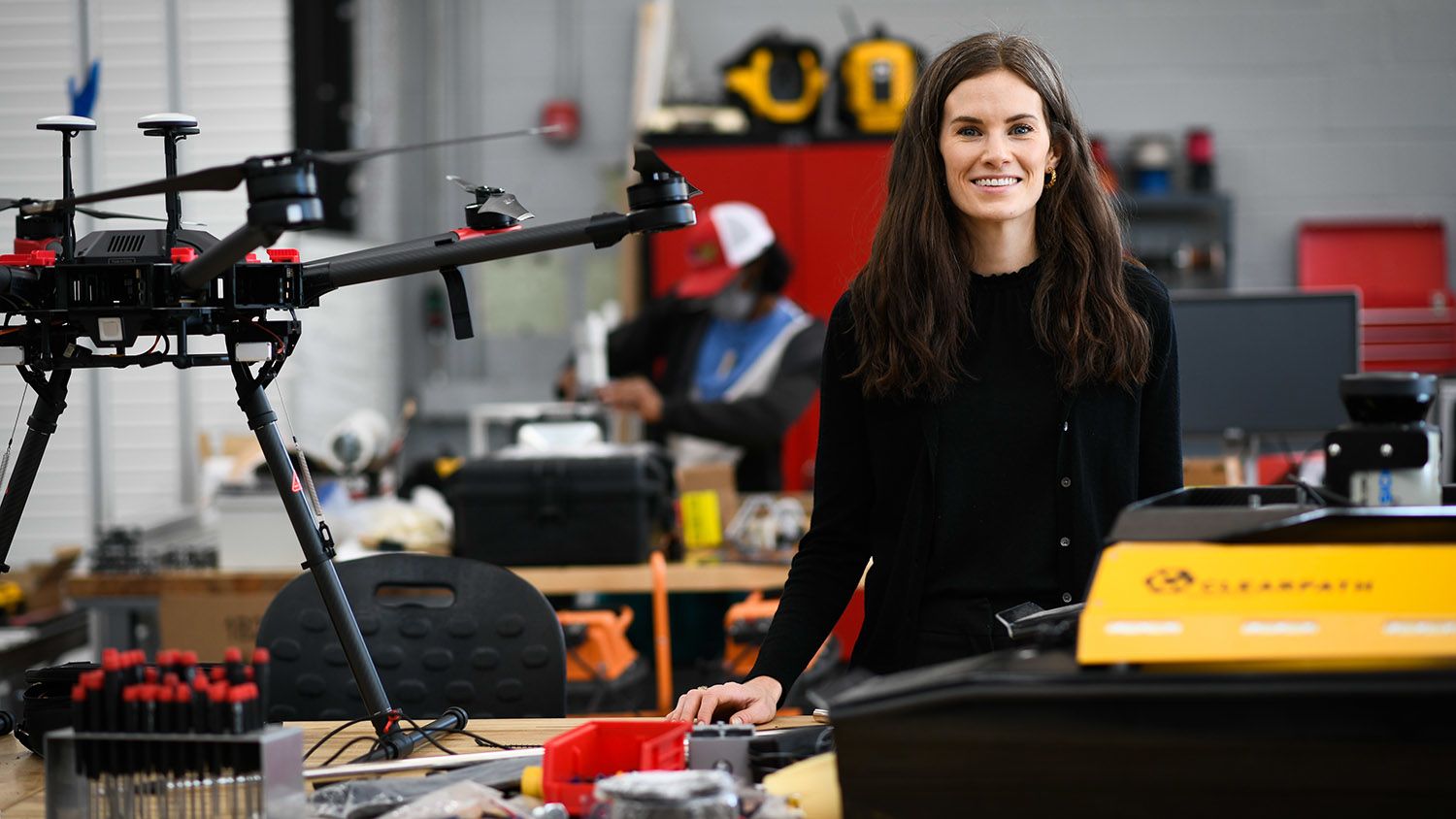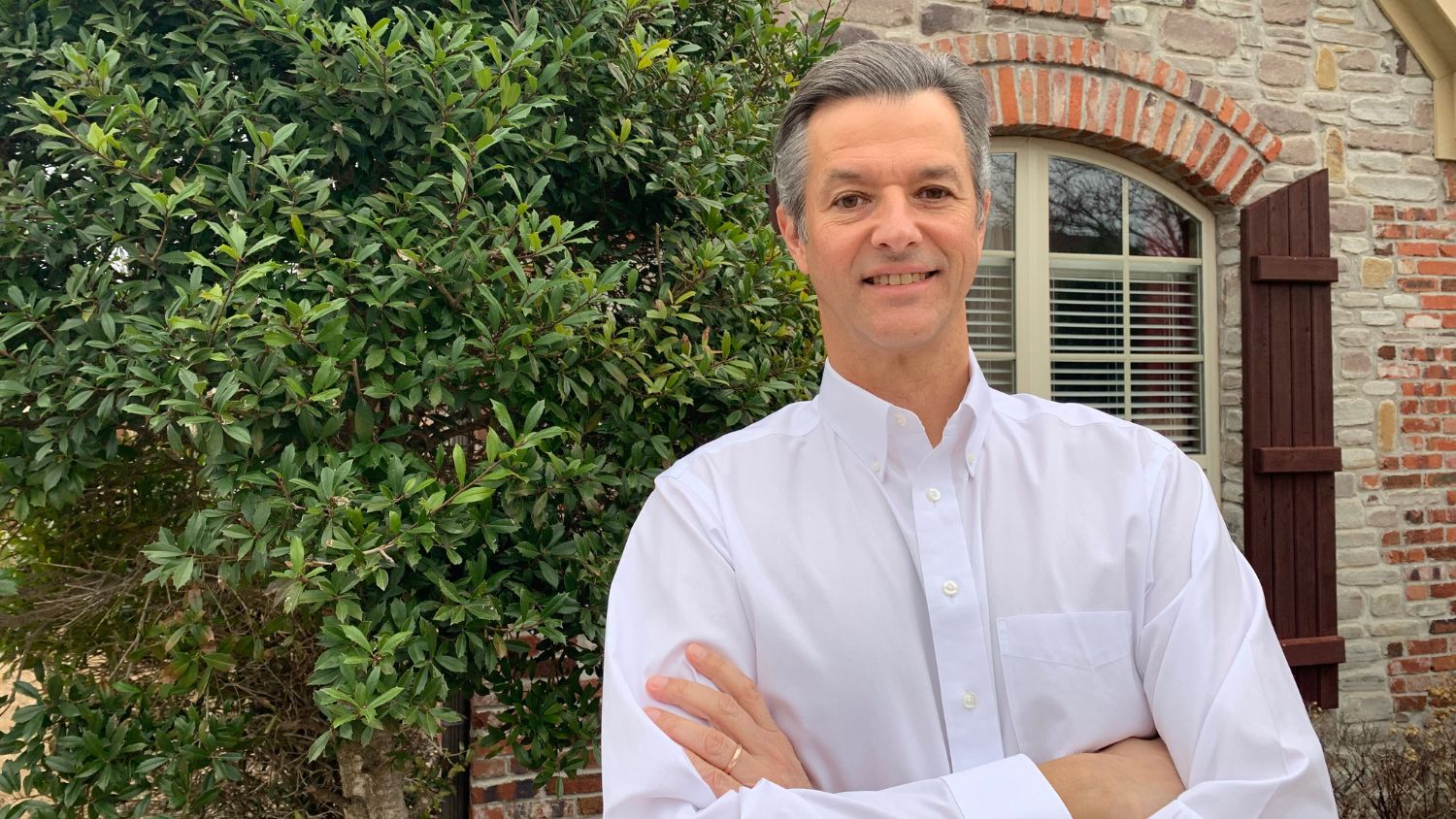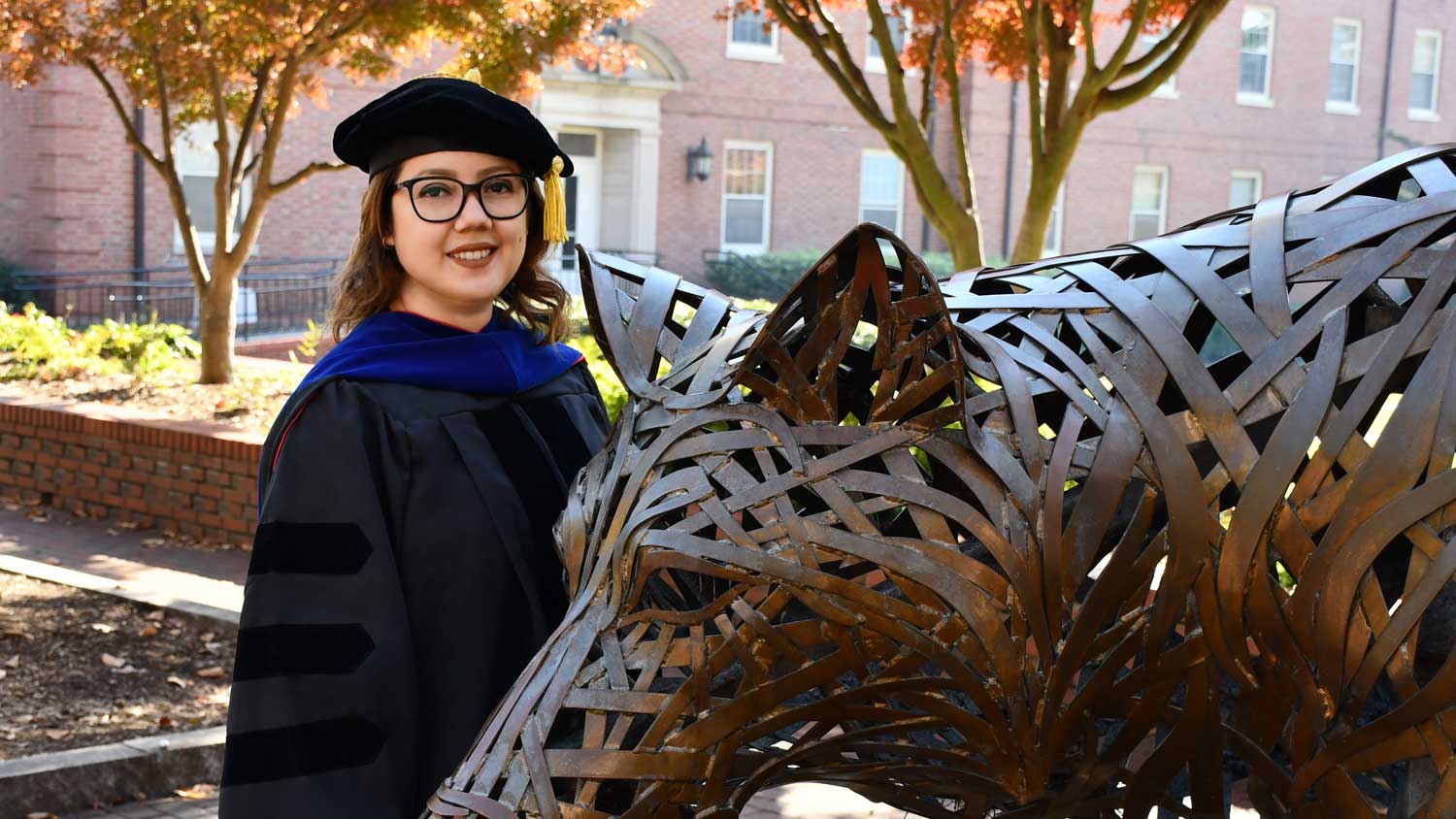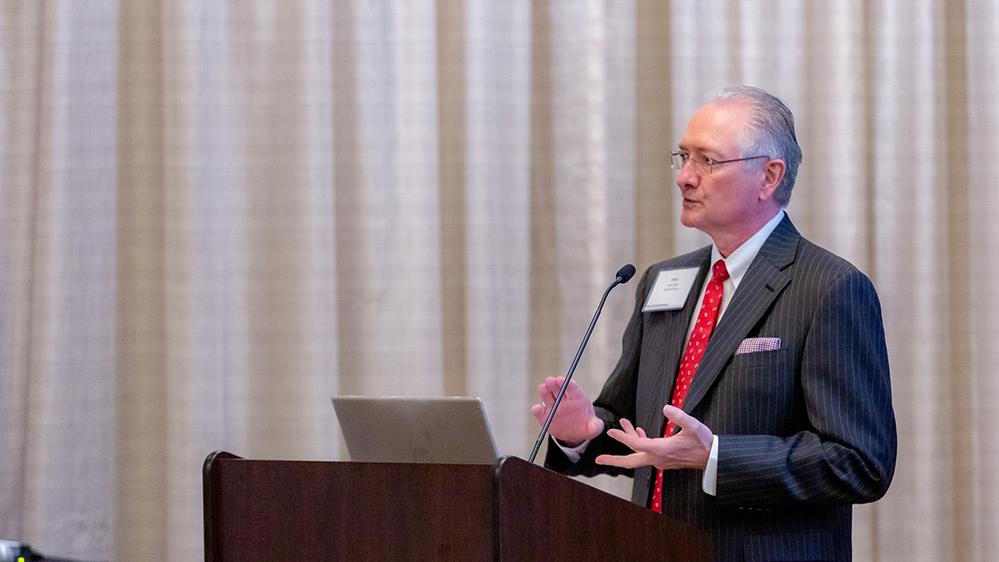Taking Farm Tech to the Next Tier

Mechanization has long been an agricultural driver from the horse-drawn seed drills of the 1700s to modern combine harvesters with satellite-based navigation systems. Today, farmers are increasingly turning to robots and other advanced technology.
In this episode of Farms, Food and You, two NC State faculty members with their fingers on the pulse of technological innovation for agriculture discuss their research and what they think it will mean for the farms of the future.
[buzzsprout episode=”8050989″ player=”true”]
Episode Transcript
[Music]
Dee Shore (00:07):
Mechanization has long been an agricultural driver from the horse-drawn seed drills of the 1700s to modern combine harvesters with satellite-based navigation systems. Today, farmers are increasingly turning to robots and other advanced technology.
I’m Dee Shore of North Carolina State University’s College of Agriculture and Life Sciences, and in this episode of Farms, Food and You, two NC State faculty members with their fingers on the pulse of technological innovation for agriculture discuss their research and what they think it will mean for the farms of the future.
[Music]
Dee Shore:
Jason Ward, an assistant professor of biological and agricultural engineering at NC State, thinks that many of the tools that will make a difference for tomorrow’s farms are out there today. But he says there’s a little more work that needs to be done to take full advantage of what they have to offer.
Jason Ward (01:08):
I think we have a lot of opportunity right now because there’s a lot of information, and we need to wrangle it and bring it into our current ag production system and to make that more productive or appropriately productive and in a way that can reduce our environmental impact and our footprint. There’s so much information out there right now. Let’s find the way to put that to work for us.
Dee Shore (01:35):
Ward points to yield mapping technology developed in the 1990s as an example. Yield mapping uses data from satellite navigation technology known as GPS to show such differences as moisture content and yields in farm fields.
Jason Ward (01:52):
A lot of people have the ability to map yields, and maybe all that they’re doing is at the end of the year is printing out the map and looking at the pattern. But there’s a lot more we can do with that. We can think about inputs, or we can think about profitability, because we need to separate the idea of maximum yield from maximum profitability. And so we can actually start looking at areas in the field wheresomebody made or lost money by looking at their yield maps and thinking about what went into this area of the field.
Dee Shore (02:24):
The same is true with the imagery that can be captured with drones, also known as unmanned aerial vehicles or UAVs. UAVs allow farmers to see problems like drought or insect or disease damage that might be hard to detect from the ground.
Jason Ward (02:41):
Well, we look at UAVs, there was a lot of early excitement and a lot of people saying we can do all these things with UAVs. When you start understanding the amount of work it takes, flying them as the easy part. That’s the fun part. But then once you make all these pictures and you calculate all these values about a crop or about the field, or even the animals, then you’ve got to do something with all that data, and you’ve got to store it somewhere and you’ve got to send it to the right people. And so there’s a lot that goes into it.
I love these technologies, and I think they’re getting really accessible and it’s some exciting work that can make us better and more efficient. Let’s not forget that right now we’ve still got a little bit of legwork to do to get from this information piece to where we’re making decisions with it.
Dee Shore (03:24):
When it comes to that legwork, Ward agrees with farmer Brandon Baton, who mentioned in our last episode that better rural internet connections could lead to improved data-based decision making. And the two also agree on the need for easier communication among different devices and pieces of farm equipment that are collecting data now.
Jason Ward (03:45):
For example, the modern generation of John Deere cotton pickers, you have the ability to generate an incredible amount of information about what they’re doing in the field. In a perfect world, whenever one of those round modules – the ones that are wrapped in yellow and pink and blue – and whenever they come off the back of that cotton picker, if that information could automatically be transmitted to the gin and the gin knows how many modules are out there in that field or from a particular farmer and they know some information about how much they weigh or what the variety of them are, that really creates the ability for them to manage their operations a little bit better.
Maybe if they know something about that variety or about its moisture before it arrives, they can set up their equipment in a way to be more efficient. I think what we have is a lot of information that is stagnant that could be creating opportunity.
Dee Shore (04:47):
And creating opportunity is something that Ward does now through his research, teaching and extension work at NC State. He has several projects underway looking at new ways to use technology to improve farming. One involves using UAVs and cameras to identify severe weather damage quickly.
Jason Ward (05:07):
If it’s a widespread event, it’s really hard for everybody that needs to get information about that field to see it and then make a decision quickly. If we can find a technology – in this case, a UAV and a simple color camera – we can fly that field after a severe weather event has occurred. Say it’s a 100-acre field, let’s say it looks like about 40 acres of it were pretty damaged – this is where your insurance adjuster needs to go, or this is where you need to think about, can you harvest it?
We’ve been able to in the past couple of years to do some really good work on being able to identify those damaged areas. But then once we have the ability to do that, we can start looking at things like variety, wind speeds, soil types, fertilizer – all these other things that go into growing their crop – how did the affect how storm-resistant it was?
Dee Shore (05:54):
Ward is also working to address some of the opportunities with cotton that he referred to earlier.
Jason Ward (06:00):
I was mentioningthe technology that’s on the cotton harvesters now. So there’s a file that harvester makes calls an HID, or a harvest ID file, and it contains some really great information about that module when it comes off the back of that round module picker. What we’ve been able to do is take that HID file and a yield file and combine that with the fiber-quality data that every bale in America gets sampled for.
If we can actually take that data and bring it back to a field-level map, we can start seeing variability in that field, in those fiber-quality parameters, and we can also even start looking at bale value, so we know in what parts of the field you made more money than others.
That gives us the ability to take this data stream that was really made for people that make products from cotton fiber – we can now turn it around and look back at it at the field level and say, “How do we manage better for better fiber?”
That was found data, right? We didn’t make anything to get that analysis done. We essentially were able to pull from multiple different places and bring them all together to make a decision.
Dee Shore (07:05):
Ward’s colleague Sierra Young is also conducting research aimed at advancing farm technology. She’s an NC State expert in field robotics. In field robotics, machines are deployed into the real world to look around and gather information about what they find.
Young finds ways to marry robots and sensors, and then to make sense of the data that they gather. For example, she’s working with colleagues to develop recommendations for using UAVs and cameras to better identify areas damaged by unintended pesticide drift. And she’s finding ways to get aerial drones and drone ships to work together to help oyster farmers sample near shore waters for harmful bacteria.
Young’s also working on a project that could lead to solutions to one of the biggest challenges that North Carolina sweet potato farmers face, how they can bring down the cost of planting their crop.
Sierra Young (08:01):
Sweet potatoes transplanting is currently mechanized, but it requires still a person, essentially, sitting on the machine to feed the transplanter. There’s a bundle of slips – sweet potatoes are grown from slips planted from these little seedlings. And they might have a bundle of them, and they’re manually placed in a transplanter that then mechanizes that process. We’re looking to use computer vision and robotics to look at the feasibility of removing the human from that process.
Dee Shore (08:37):
With a depth sensor and a camera, they’re trying to find ways to help a robot discern precisely where each slip is in the bundle, so they can grasp each slip individually. After that, they’ll be building a robotic arm that’s gentle enough and accurate enough to grab the slip and place it into the feeding system for transplanting.
Sierra Young (09:00):
It’s not an easy problem, but at least we’re hoping to make some progress and gain some insight on the feasibility and the technical requirements to automate that process.
Dee Shore (09:10):
That’s important because North Carolina leads the nation in sweet potato production, but farmers are concerned about labor costs and the availability of workers they need to plant and harvest the crop.
Young sees labor as a major issue that will continue to drive farm technology development.
Sierra Young (09:28):
In the next five to 10 years, we’ll probably be seeing, as we have labor shortages and labor issues, a lot of robots taking over some of those tasks related to harvesting, weeding and picking for those high-value crops.
So there’s a lot of research now on apple harvesters and robotic weeding, whether it’s mechanical or herbicide weeding, just because there’s a lot of economic pressure and environmental pressure to reduce the current use of herbicide applications associated with weeding. Weed control can also play a huge role in yields. But I think those types of systems that are in very, either early deployments, early testing evaluation, will start to appear in more and more farms as they kind of roll out of these ag tech startup companies.
In terms of harvesting efficiency, really, it’s a question of making those robots faster, right? Humans are very fast and more time-efficient for tasks like that.
I think pushing the limits of efficiency for some of the harvesting platforms is also going to be a big driver of the adoption of some of those technologies.
Dee Shore (10:42):
In the longer term, Young sees robots getting smaller and communicating and operating together in so-called swarms to get tasks done.
Sierra Young (10:50):
So if you think about right now, you might have one really large planter – whatever type of ag machinery you have – replacing that with multiple small robots that are all cooperating and communicating in real time to cover a field and perform whatever task it is, whether it’s weeding or harvesting or planting. And the reason for that is it becomes scalable. So if you have small farms, medium farms, large farms, you can select the number of robots that’s appropriate or most efficient for that farm size. There’s some benefits like they reduce soil compaction. You’re more resilient to equipment failure. If one of your robots goes down, you’re not dead in the water.
Dee Shore (11:37):
Though Young sees rapid progress ahead, she acknowledges that realizing the promise of robotics in agriculture won’t necessarily be easy.
Sierra Young (11:47):
There’s still a lot of barriers to overcome, especially inter-vehicle communications and data sharing in real time in areas that might have limited connectivity..
If you can picture multiple platforms operating that maybe they all need to know where each other are so that they don’t do the same task or run into each other, that requires a lot of coordination. Sometimes you might have a central kind of server receiving all that information and broadcasting back out to all their robots where everything is. What happens if none of the platforms know what the others are doing? So being resilient to communication-type failures.
Then, of course, there’s practical challenges like performance. These tasks are very complex, even harvesting. You might think about it as a simplified task of, “Oh, we’re going to remove this weed. We’re going to pick this apple,” but those tasks are actually complex, and think about all the biology, the fine-tune adjustments of the system to accurately detect, identify and remove a weed or to look behind leaves and identify missed fruits or vegetables that, perhaps whereas we as humans, we can move all around and look in there and see what’s happening. But to replicate all of that perception and decision-making by a machine and also pick the fruit without damaging it – a lot of progress is being made, but to fully be adopted and have it be economically efficient, coming up to human performance or the performance of the machines we have now, I think there’s some advancements that still need to be made.
Dee Shore (13:35):
Ward agrees, and he and Young are optimistic about the potential for advanced farm technology to continue making agriculture more profitable, efficient, safe and environmentally friendly.
Jason Ward (13:47):
I think we’ve had quite an adventure over the last few years with digital technology on the farm, and I think that it’s not perfect. There’s still days where it doesn’t work or days where it’s a struggle, but I think those days are going to become fewer and fewer. And I get excited about where we’re heading.
[Music]
Dee Shore (14:04):
Thanks for listening today, and we hope you’ll join us again for the next episode of Farms, Food and You. To learn more about the College of Agriculture and Life Sciences and our podcast visit go.ncsu.edu/farms. While you’re there, share your thoughts. We’d love to get your ideas and to hear what topics you’d like for us to explore in the future.
[Music]
About Our Guests
Jason Ward leads NC State’s Advanced Ag Lab in the Department of Biological and Agricultural Engineering. A native of Kentucky, Ward had no agricultural background before he attended the University of Kentucky as an undergraduate and graduate student in the early 2000s. There, he quickly became captivated by advanced technologies and how they could enhance agriculture. After earning a Ph.D. from Mississippi State University, he joined NC State in 2017 and is an assistant professor and extension specialist.
Sierra Young is an assistant professor in NC State’s Department of Biological and Agricultural Engineering. She holds three degrees in civil engineering: a bachelor’s from Cornell University and a master’s and Ph.D. from the University of Illinois at Urbana-Champaign. She also studied environmental engineering and worked on a project using unmanned aerial and surface vehicles for water management in South India. That sparked her interest in robotics, and today she runs NC State’s DAISy Lab, short for Digital Agroecology and Intelligent Systems. She joined the university in 2019.
This post was originally published in College of Agriculture and Life Sciences News.
- Categories:


